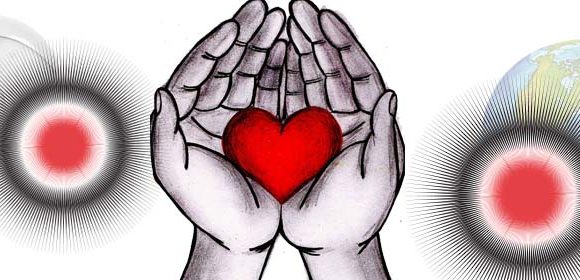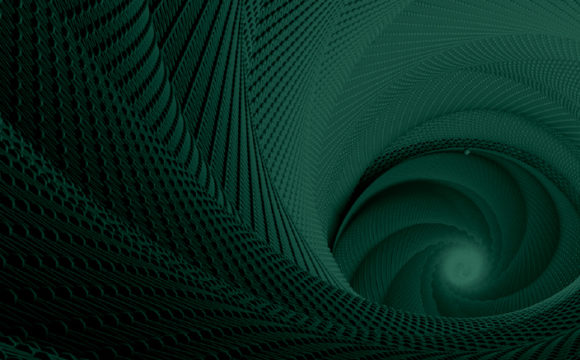At the edge of our world, where Earth meets the infinite black of space, something profound stirs in the human spirit. For centuries, space exploration has been framed as a scientific and technological endeavour – sending machines and humans beyond our atmosphere in search of knowledge. But for many of those who venture into space, or study its mysteries from the ground, the experience is not just intellectual – it’s deeply spiritual.
From astronauts awestruck by the sight of Earth from orbit to cosmologists contemplating the birth of the universe, space has become a modern cathedral of contemplation, blending hard science with transcendent wonder.
The Overview Effect: A Vision from the Edge
Many astronauts describe a sudden, life-changing shift in perspective after seeing Earth from space – an experience known as the Overview Effect. First coined by space philosopher Frank White, the Overview Effect refers to a profound emotional and cognitive reaction astronauts have when viewing the Earth as a fragile, borderless sphere floating in the void.
Apollo 14 astronaut Edgar Mitchell described it as a “sensation of universal connectedness.” After his return, he founded the Institute of Noetic Sciences to explore consciousness, spirituality, and the mysteries of human potential. Mitchell felt that what he experienced in space was not just awe, but a mystical revelation – that science and spirituality were not separate, but two languages describing the same reality.
Similarly, Chris Hadfield, Canadian astronaut and former commander of the International Space Station, wrote of the emotional gravity of looking down at Earth: “You see how fragile it is. You feel more connected to it and more protective of it.” His reflections are tinged with reverence, not just for the beauty of the planet, but for the preciousness of life itself.
Carl Sagan and the Poetry of the Cosmos
No discussion of the spiritual dimensions of space science would be complete without Carl Sagan. A planetary scientist, Sagan was also a master poet of the cosmos. His famous meditation on the “Pale Blue Dot” – a photograph of Earth taken by Voyager 1 from 3.7 billion miles away – reframed our entire civilization as a single point of light in a vast, indifferent universe.
And yet, in that vastness, Sagan found not nihilism but humility and responsibility. “Our planet is a lonely speck in the great enveloping cosmic dark,” he wrote, “In our obscurity, in all this vastness, there is no hint that help will come from elsewhere to save us from ourselves… It is up to us.”
This kind of thinking borders on the spiritual – not in a religious sense, but in its reverence for life, awareness, and the interconnectedness of all things.
The Monk-Scientist and the Telescope
The spiritual dimension of astronomy isn’t new. In the 17th century, Jesuit priest and astronomer Giovanni Battista Riccioli mapped the Moon while also defending a theological worldview. Today, the Vatican Observatory – one of the oldest astronomical institutions in the world – continues to blend faith and science.
Brother Guy Consolmagno, the current director of the observatory, holds a Ph.D. in planetary science from MIT and is also a Jesuit brother. He describes science as “an act of worship,” and believes that studying the universe is a way to better understand the Creator.
“Science,” he says, “is how we experience the joy of discovery… It’s a form of prayer.”
Cosmic Contemplation: The New Mysticism?
Today’s scientists are not all religious, but many express a kind of secular spirituality in their work. Theoretical physicist Brian Greene speaks of the multiverse and cosmic time with language that evokes awe and mystery. Astrophysicist Neil deGrasse Tyson, while sceptical of religion, often discusses the “spiritual uplift” that comes from contemplating the universe.
What’s emerging is a new form of cosmic spirituality – rooted not in scripture or dogma, but in the experience of scale, mystery, and the unknown. It’s the same impulse that drove ancient humans to worship the stars, now channelled through telescopes, rovers, and particle accelerators.
For some, space becomes a sanctuary – for others, a teacher. But for many, it becomes a mirror, reflecting the vastness outside back into the inner world.
Why It Matters Now
In a world facing environmental crises, political division, and existential anxiety, the spiritual dimension of space exploration offers something vital: perspective. From orbit, the divisions that seem monumental on the ground vanish. Nations blur into continents. Conflict seems absurd. The planet looks unified, delicate, and in need of care.
This isn’t just poetic. It has practical consequences. Many astronauts return to Earth more committed to peace, environmental stewardship, and global cooperation. Space, in this sense, doesn’t just change individuals – it can inspire new forms of global consciousness.
The Future of Sacred Science
As humanity prepares for missions to Mars, private companies launch tourists to the edge of space, and telescopes peer into the earliest moments after the Big Bang, the marriage of science and spirituality is evolving.
Whether or not we ever encounter alien life or colonize distant planets, the journey itself is sacred. It reminds us that to explore the stars is also to explore ourselves – that the real frontier may be not “out there,” but within.
In the end, space is not empty. It is full – of questions, of beauty, of possibility. And for many who study it, travel through it, or simply gaze up at it from their backyard, it remains the most profound expression of what it means to be human: curious, searching, and full of wonder.








